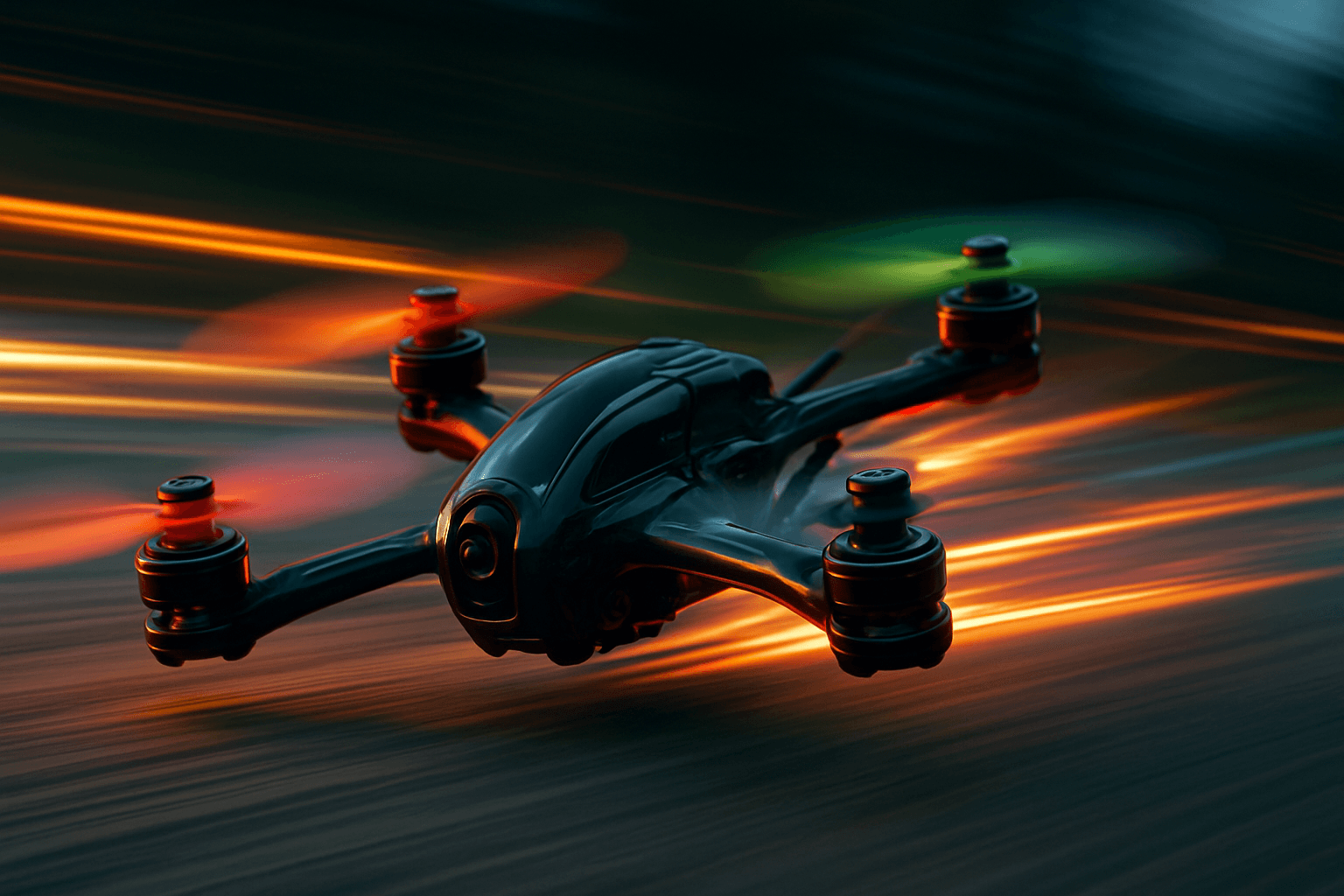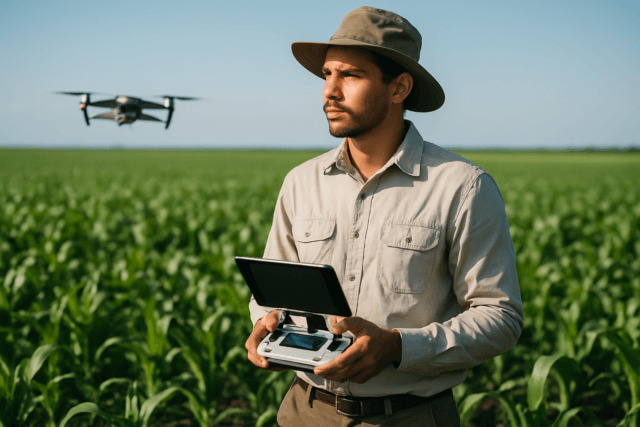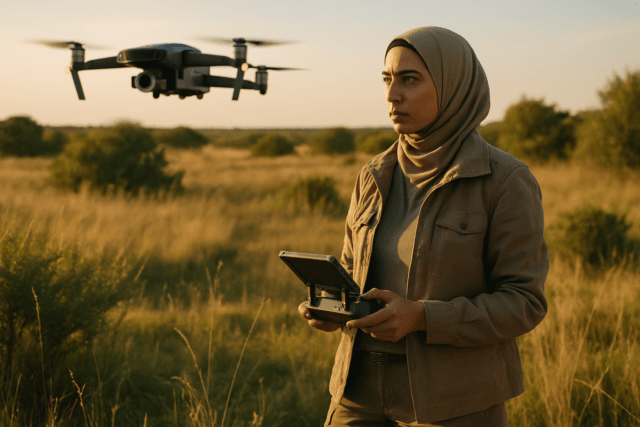Drones have evolved from simple remote-controlled aircraft to sophisticated flying machines with a wide range of capabilities. One of the most exciting aspects of drone technology is speed. From recreational models to specialized racing drones and even military applications, drone speeds vary significantly. This article dives deep into the world of drone speed, exploring different types of drones, legal limitations, factors affecting speed, and some of the fastest models available.
How Fast Can Drones Actually Fly?
The speed of a drone depends on its type and intended use. Here’s a breakdown:
- Consumer Drones: These are popular for photography, videography, and recreational use. They typically reach speeds of around 40-70 mph (64-113 km/h).
- Toy Drones: Designed for beginners and children, toy drones usually have a limited speed of around 12 mph (19 km/h).
- Racing Drones: Built for speed and agility, racing drones can often exceed 100 mph (160 km/h). Some models can even reach speeds of up to 165.2 mph (265.8 km/h).
- Fixed-Wing Drones: These drones are generally faster than multirotor drones due to their aerodynamic design, with speeds ranging from 40 to 90 mph (64 to 145 km/h).
- Military Drones: Used for surveillance and tactical missions, military drones can reach impressive speeds, with some models surpassing 1,650 mph (2,655 km/h).
Legal Speed Limits for Drones
It’s crucial to be aware of the legal restrictions on drone speed in different regions. Regulations vary, and it’s essential to check local laws before flying. Here are some examples:
- United States (FAA): The maximum legal drone speed is 100 mph (160 km/h).
- European Union (EASA): For the A1 drone category, which covers most recreational drones, the speed limit is 42 mph (68 km/h). However, individual EU countries may have stricter regulations.
- China: The maximum speed for drones is 62 mph (100 km/h).
- UK: Maximum speed of 19 m/s (approx. 42.5 mph) for C0 and C1 class drones.
Factors Influencing Drone Speed
Several factors affect how fast a drone can fly:
- Motor Power: More powerful motors enable higher speeds.
- Battery Capacity: A higher battery capacity can sustain high-speed flight for longer durations. Higher speeds consume battery faster.
- Aerodynamics: A streamlined design reduces air resistance, allowing for greater speeds.
- Weight: Lighter drones can achieve higher speeds and greater maneuverability.
- Propellers: The size, shape, and pitch of the propellers influence thrust and speed.
- Wind Resistance: Strong winds can significantly affect a drone’s speed and stability.
Fastest Drones in the World
Here’s a look at some of the fastest drones currently available:
- Peregreen 2: This custom-built drone broke the Guinness World Record for the fastest ground speed by a battery-powered remote-controlled quadcopter, with an average top speed of 298.47 mph (480.23 km/h).
- Red Bull Drone: Inspired by Formula 1 cars, this custom-built drone can surpass a top speed of over 217 mph (350 km/h).
- DRL Racer X: With an average speed of 165.2 mph (265.8 km/h), the DRL Racer X is known for its advanced motors and lightweight design.
- iFlight Mach R5 Sport: A popular choice for FPV racing, this analog 6S quad is designed for speed and agility.
- Walkera F210 3D Racing Quadcopter: Built for fast racing, this drone can reach speeds of up to 55 mph (88 km/h) thanks to its carbon fiber and aluminum alloy construction.
- Prowess microdrone: This microdrone, weighing less than 250 grams, reached 340.78km/h (211.75mph), setting a world record for remote-controlled microdrone quadcopters.
Regulations in the UK
In the UK, drone regulations are established by the Civil Aviation Authority (CAA). These regulations cover various aspects of drone operation, including speed limits, height restrictions, and flying zones. As of 2025, here are some key points:
- Maximum Speed: For C0 and C1 class drones, the maximum speed is 19 m/s (approximately 42.5 mph).
- Height Restrictions: Drones cannot be flown more than 120 meters (400 feet) from the pilot.
- Flying Categories:
- A1 Subcategory: Allows flights over people with drones under 250g.
- A2 Subcategory: Requires maintaining a 50-meter distance from people with drones under 2kg and passing the A2 theory exam.
- A3 Subcategory: For drones of 2kg or greater, flying far from people is required.
- Drone Classes:
- C0 Class: Drones under 250g with a maximum speed of 42.5 mph.
- C1 Class: Drones under 900g with a maximum speed of 42.5 mph.
- C2 Class: Drones under 4kg, often used for professional photography, capable of speeds in excess of 80km/h. C2 drones must have a low-speed mode which limits the maximum speed to 3m/s (approx. 6.7 mph) when flying close to people.
- C4 Class: Drones greater than 25kg, subject to the same regulations as traditional aircraft.
How Wind Affects Drone Speed
Wind can significantly impact drone flight, affecting both speed and stability. Here’s what you need to know:
- Headwinds: Flying against the wind decreases battery life and makes flight time less predictable.
- Tailwinds: While they can increase speed, sudden changes in wind speed can cause instability.
- Wind Speed Limits: Commercial drones can mostly fly at wind speeds between 15 and 45 km/h. It’s generally risky to fly when the wind is stronger than two-thirds of the drone’s maximum speed.
- Microbursts: These unexpected gusts of wind can change direction quickly, affecting takeoff and landing.
Choosing the Right Drone for Speed
When selecting a drone for speed, consider the following:
- Type of Flying: Racing drones are designed for maximum speed and agility, while consumer drones offer a balance of speed and features.
- Motor and Battery: Look for powerful motors and high-capacity batteries to achieve higher speeds and longer flight times.
- Aerodynamic Design: A streamlined design reduces air resistance and improves speed.
- Wind Resistance: Check the drone’s wind resistance specifications to ensure it can handle windy conditions.
- Regulations: Be aware of local regulations regarding drone speed and operation.
The Future of Drone Speed
Drone technology is constantly evolving, and speeds are expected to increase as new materials, motors, and designs are developed. Advancements in battery technology will also play a crucial role in extending flight times at high speeds. As regulations adapt to these advancements, we can anticipate even more exciting developments in the world of drone speed.
Additional Considerations
- Environmental Conditions: Besides wind, other weather conditions like rain and cold can also affect drone performance.
- Pilot Skill: Flying a high-speed drone requires skill and experience. It’s essential to practice in a safe environment before attempting high-speed maneuvers.
- Maintenance: Regular maintenance is crucial to ensure your drone operates at peak performance and remains safe to fly.
Conclusion
Drone speed is a fascinating aspect of this rapidly evolving technology. Whether you’re a recreational user, a professional racer, or simply interested in the capabilities of these flying machines, understanding the factors that affect drone speed and the regulations that govern their operation is essential. As technology advances, we can expect even faster and more capable drones in the future, opening up new possibilities for aerial exploration and innovation.





